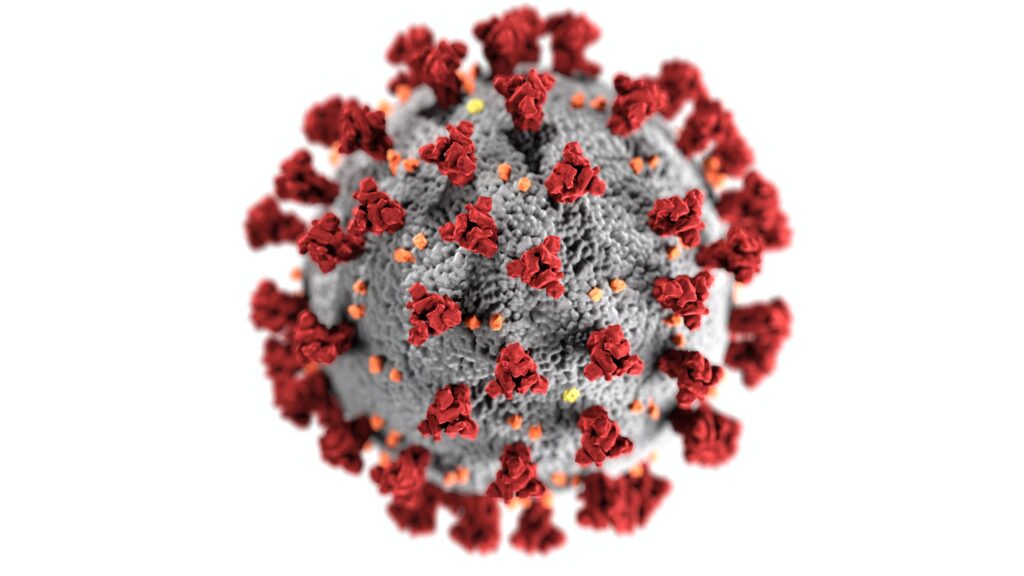
In the future, we’ll all remember 2020. For all the wrong reasons, of course, but remember it we will. 2020. The year the pandemic came. The year we had to stay in. The year we put the key in the lock, turned it, and kept it there.
Whenever I see the key in my front door lock, I wonder: how come this never happened before? Actually, it did. Kind of, anyway. In 2003 there was an outbreak of a somewhat similar virus called SARS. It was actually a type of coronavirus called SARS-Cov which started in Guangdong province, China. Altogether, there were 4 cases in the UK and no deaths. I’m writing this on Tuesday November 24th 2020 and as of today in the UK there have been 1.53 million confirmed cases of Covid-19 and 55,230 Covid-caused deaths. How come the 2020 outbreak has caused massively more suffering and death compared to the 2003 one? They’re both types of coronavirus after all. So what’s different this time?
How Does Covid-19 ‘Get in’?
Well, first of all: think of those massively magnified pictures we’ve all seen of a Covid-19 coronavirus. The magnification allows us to see that the virus has a distinctive shape, which turns out to be ball-shaped with spikes on it. At the end of each spike is a little crown shape: and that’s why it’s called a coronavirus. The spikes are key to this virus’s success, because they allow it to latch on to a protein on the surface of our cells called ACE2. In fact it’s just like putting a key in a lock. Now, back in 2003, the SARS coronavirus could do it too, but the crown on the end of the spikes on the current Covid-19 coronavirus is a better fit for the ACE2 protein than SARS was. It’s easy to see what’s happened. The key is now a better fit, so it unlocks us more easily. It’s like the virus learned from 2003.
But there’s more. When a coronavirus opens the body’s ‘lock’, it has to split into two halves in order for the infection to continue. Back in 2003, with SARS, that didn’t happen very easily. Hence only a few thousand cases and a few hundred deaths world-wide. But with the current coronavirus, it happens very easily indeed, because Covid-19 uses an enzyme to enable it to split called furin which it gets from the human body. How smart. It’s like it learned from last time that it needed something more. And it got it. From us. As a consequence, to date and world-wide there have been 59.2 million Covid-19 cases and 1.4 million deaths. Compare that to the eventual 2003 SARS totals: 8,096 cases globally and 774 deaths in total.
But here’s the kicker. Most respiratory viruses tend to infect either the upper or the lower airways. If they infect the upper airways they spread really easily, but all you get is a runny nose. If they infect the lower airways, they cause more severe illnesses such as pneumonia but they’re harder to spread. You guessed it. Covid-19 infects both upper and lower airways. So we get the worst of both worlds. It’s really easy to catch and it can make us really, really ill.
A Smart Virus
We’ve only just scratched the surface but the point is clear. The current Covid-19 virus is really smart. Massively smarter than SARS back in 2003 and hence massively more effective. It’s learned from its past mistakes. Like we do. It’s got better and better at what it does. Like we do. And it makes mistakes. Just like we do. If I don’t get my front door key copied correctly – if the key cutter makes a mistake and there’s just one tiny change from the original – it won’t open the door. When viruses replicate, they make mistakes too. We call these mistakes ‘mutations’. Sometimes when they mutate viruses weaken and die. But sometimes when they mutate they become resistant to vaccines or develop abilities to jump between species: as we’re told the current coronavirus did – from animals to us. So just like we do, the coronavirus can benefit even from its mistakes.
It’s hard to escape from the conclusion that the 2020 coronavirus shows features akin to what we would recognise as ‘intelligence’. So where did that intelligence come from? Some are saying that it’s so sneaky and clever that it must have been engineered that way; by human beings, perhaps in a lab near Wuhan or somewhere else. At first glance, this assertion seems key to understanding a lot; not least the way Covid-19 is so much of an ‘improvement’ on SARS. If I was going to ‘weaponise’ SARS and turn it into a much more effective entity I’d tweak it in exactly the way it appears to have been tweaked. In not making it more lethal I’d also (a) ensure that it continued to spread (by not killing most of its hosts) and (b) ensure that I was sending out a very distinctive ‘calling card’ (‘See what I could have done…?’).
Opening New Doors
But, of course, that way madness lies. Much better to explain the difference between SARS and Covid-19 in terms of ‘mutation’; even evolution. A naturally-occurring process, utilizing ‘species jumping’ and the like. But surely it’s never a bad thing to examine alternative scenarios. Covid-19 is still shrouded in mystery and much is still hidden from us; still locked away. Perhaps it’s time to try to open a new door in search of greater understanding.